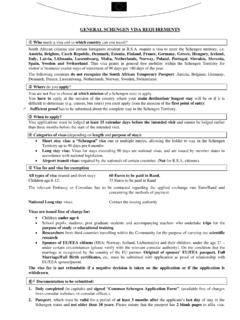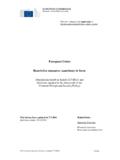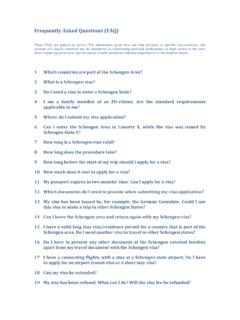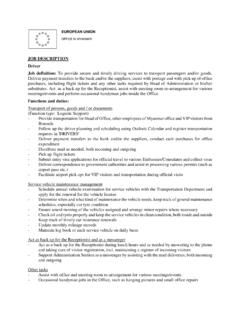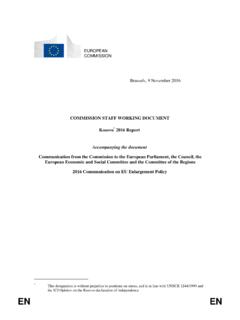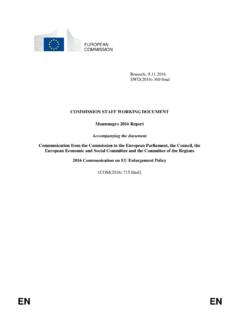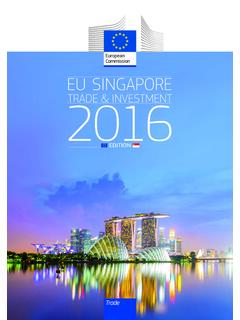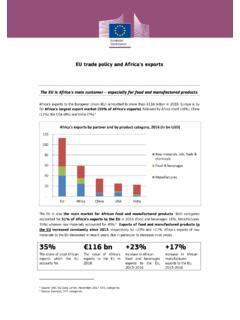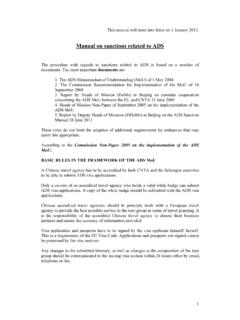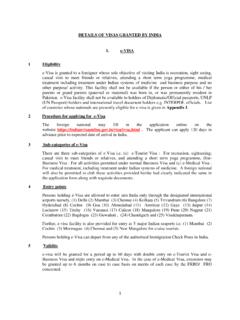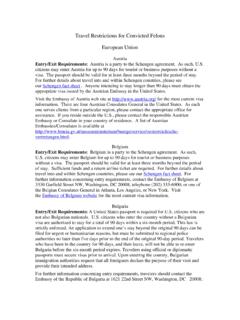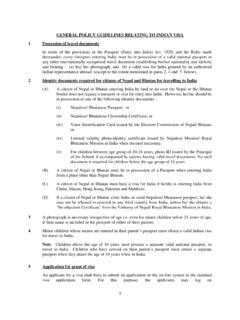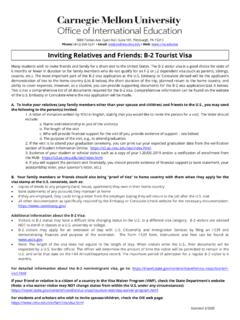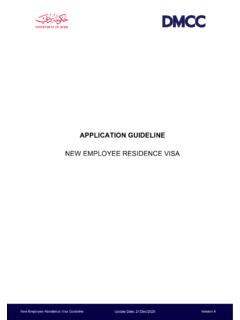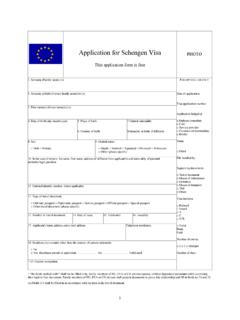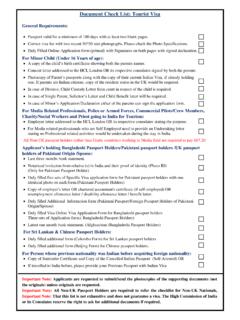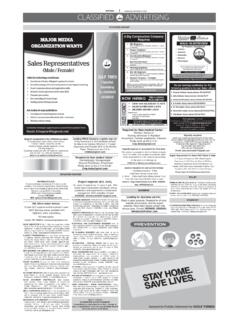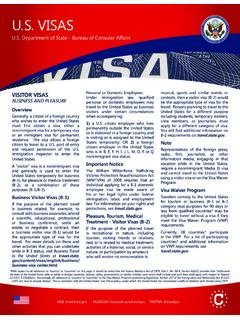Transcription of Frequently Asked Questions on the Schengen visa-free
1 Frequently Asked Questions on the Schengen visa -free 1. In which countries will the visa waiver apply? The visa -free regime applies to stays in the territories of the EU Member States, except for the United Kingdom and Ireland. The EU Member States covered by the visa waiver are: the EU Member States which are part of the Schengen area: Austria, Belgium, the Czech Republic, Denmark, Estonia Finland, France, Germany, Greece, Hungary, Italy, Latvia, Lithuania, Luxemburg, Malta, the Netherlands, Poland, Portugal, Slovakia, Slovenia, Spain and Sweden; the EU Member States which do not yet fully apply the Schengen acquis (those who are not yet part of the Schengen area without internal borders): Bulgaria, Croatia, Cyprus and Romania1.
2 The visa waiver, in principle, also applies to the associated Schengen states: Iceland, Liechtenstein, Norway and Switzerland. 2. Does the visa waiver include the French and Netherlands overseas territories? As regards the France and the Netherlands, the visa -free travel shall apply only to the European territory of these Member States. The visa regime between the overseas territories of these Member States and the six countries remains subject to bilateral arrangements between the countries concerned or to national legislation.
3 The overseas territories of France are: Guadeloupe, Martinique, French Guiana, Reunion, French Polynesia, New Caledonia, Mayotte, Saint Pierre and Miquelon, Wallis and Futuna, Saint Barth lemy, Saint Martin, Clipperton Island and the French Southern and Antarctic Lands. The overseas territories of the Netherlands are: Aruba and the Netherlands Antilles (consisting of Bonaire, Curacao, Saba, Saint Eustatius and Saint Martin). 2. How long can I stay without a visa in the Schengen area? You can stay 90 days in any 180-day period within the Schengen area.
4 When applying this rule, the following aspects should be taken into account: The date of entry is considered as the first day of stay in the Schengen territory; The date of exit is considered as the last day of stay in the Schengen territory; 1 Stays in these states are not calculated in the overall period of stay for the Schengen area. Instead the 90-day limit is calculated individually for each of these states. For instance, after a 90-day stay in the Schengen area, the person can immediately travel to Croatia and stay for another 90 days there.
5 The 180-day reference period is not fixed. It is a moving window, based on the approach of looking backwards at each day of the stay (be it at the moment of entry or at the day of an actual check, such as inland police control or border check upon departure); Absence for an uninterrupted period of 90 days allows for a new stay for up to 90 days. It should be noted that periods of previous stay authorised under a residence permit or a long-stay visa are not taken into account in the calculation of the duration of visa -free stay.
6 Residence permits and long-stay visas are subject to different rules and the above explanations and calculations do not apply to them. 3. Can I enter the Schengen area more than one time during that period? Yes, you can. However you must carefully calculate your days of stay as the overall period of stay must not exceed the overall total of 90 (ninety) days of stay within any 180-days period (see above). 4. What travel documents are needed in order to enjoy visa -free travel to the Schengen area? A passport issued within the previous 10 years and valid for at least three months after the intended date of departure from the Schengen area.
7 5. Does the visa waiver give you the right to enter the territory of the Schengen States? The visa waiver does not give an unconditional right of entry and stay. The Member States have the right to refuse entry and stay in their territories if one or more of the entry conditions are not met. For stays not exceeding 90 days in any 180-day period, the entry conditions for third-country nationals are the following: (a) possession of a valid travel document (see question 4) or documents authorising them to cross the border; (b) justifying the purpose and conditions of the intended stay, having sufficient means of subsistence, both for the duration of the intended stay and for the return.
8 (c) not to be a person for whom an alert has been issued in the Schengen Information System (SIS) for the purposes of refusing entry; (d) not to be considered to be a threat to public policy, internal security, public health or the international relations of any of the Member States, in particular where no alert has been issued in Member States national data bases for the purposes of refusing entry on the same grounds. 6. What documents do I need to show to the immigration officer at the port of entry?
9 You need to show your passport. In addition, you might be Asked to also show documents proving your purpose and conditions of stay (for example tickets for further journeys and return tickets; reservation of accommodation; invitation letter in case of visits, conferences or events; school enrolment certificate in case of study etc.)2 as well as evidence of sufficient means of subsistence (see below). 7. How much money do I need to have with me in order to travel to the Schengen area? According to Article 5(3) of the Schengen Border Code: "means of subsistence shall be assessed in accordance with the duration and the purpose of the stay and by reference to average prices in the Member State(s)concerned for board and lodging in budget accommodation, multiplied by the number of days stayed.
10 " The verification that the third-country national concerned has sufficient means of subsistence for the duration and purpose of the intended stay, for his/her return to the country of origin or transit to a third country or that he/she can obtain these means legally. In order to assess the means of subsistence, the reference amounts set by each Schengen State3 must be taken into account. The verification of sufficient means of subsistence may be based on cash, travellers' cheques and credit cards in the third-country national's possession.
